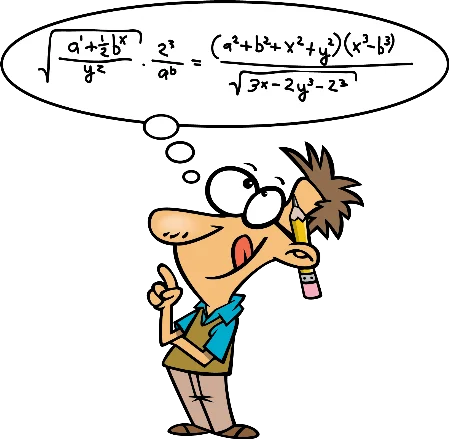Periodic Inventory
Inventory Methods

Periodic Inventory System
Detailed Records Required and Maintained With A Periodic System
- No Detail Subsidiary Inventory Ledger (stock records) are required; however, as you will see later where you learn to assign costs, strong consideration should be given to at least maintaining detail records regarding your purchases.
- Count and Costing Sheets used when performing a physical inventory count.
- Source Documents Used To Maintain The Inventory:
- Purchase Orders and Invoices from Suppliers are used to determine the cost of items.
Accounting and Bookkeeping Procedures For Periodic Inventory System
Sale of Products-Recording of Revenue Earned and Associated Taxes
Of course when we sell a product we need to record the increase in our assets either Cash or Accounts Receivable and the corresponding increase in our revenue Sales and the increase to our Sales Tax Liability. Recording the revenue and associated tax liability is done the same way if we used the Perpetual Inventory Method of maintaining our Retail Inventory.
Of course when we sell a product we need to record the increase in our assets either Cash or Accounts Receivable and the corresponding increase in our revenue Sales and the increase to our Sales Tax Liability. Recording the revenue and associated tax liability is done the same way if we used the Perpetual Inventory Method of maintaining our Retail Inventory.
No entry however is made at the time of sale to the Cost of Goods Sold Account or Merchandise Inventory Account. Can you tell me why ? The answer was given in the prior Detailed Records Required and Maintained With A Perpetual Inventory Section. Without maintaining detail records, we simply don't know at the time of sale what the cost of the item(s) sold are.
Entry Needed To Record The Sales Transaction:
Assumptions:
Sale of merchandise inventory in the amount of $1000 was made Sales Tax Rate of 10%
Assumptions:
Sale of merchandise inventory in the amount of $1000 was made Sales Tax Rate of 10%
| Description | Debit | Credit |
| Cash or Accounts Receivable | 1100 | |
| Sales | 1000 | |
| Sales Tax Payable | 100 |
Journal Used:
Cash Sale would be recorded in the Cash Receipts Journal as a debit to our Cash Account, a credit to our Sales Account, and a credit to our Sales Tax Liability Account
Cash Sale would be recorded in the Cash Receipts Journal as a debit to our Cash Account, a credit to our Sales Account, and a credit to our Sales Tax Liability Account
Charge(On Account) Sale would be recorded in the Sales Journal as a debit to our Accounts Receivable Control Account, a credit to our Sales Account, and a credit to our Sales Tax Liability Account
Purchase Items
The Purchase Account is an account used only to record the cost of merchandise bought to be sold to your customers. The Purchase Account is a temporary account that is adjusted at the end of an accounting period (month/year). By using the Purchases Account it provides you with a quick total of the amount you spent buying products during a period. Since purchasing products to sell is probably the biggest expenditure a business that sells products will incur during a period (month/year), we accountants (bean counters) feel it is worthy of an account of its own named Purchases.
The Purchase Account is an account used only to record the cost of merchandise bought to be sold to your customers. The Purchase Account is a temporary account that is adjusted at the end of an accounting period (month/year). By using the Purchases Account it provides you with a quick total of the amount you spent buying products during a period. Since purchasing products to sell is probably the biggest expenditure a business that sells products will incur during a period (month/year), we accountants (bean counters) feel it is worthy of an account of its own named Purchases.
Entry Needed To Record The Purchase Transaction:
Assumptions:
Purchase of merchandise inventory for resale in the amount of $600 was made.
Assumptions:
Purchase of merchandise inventory for resale in the amount of $600 was made.
| Description | Debit | Credit |
| Purchases | 600 | |
| Cash or Accounts Payable | 600 |
Journal Used:
Cash Purchase would be recorded in the Cash Disbursements Journal as a debit to our Purchases Account and a credit to our Cash Account.
Charge(On Account) Purchases would be recorded in the Purchases Journal as a debit to our Purchases Account and a credit to our Accounts Payable Control Account.
Determine Cost Of Products Sold and Ending Inventory Values
The Cost Of Goods Sold is a special account that records the cost of the goods that were sold to your customers. When you use the Periodic Inventory System, no entry is made to this account or the Merchandise Inventory Account at the time of sale. This Account and the Merchandise Inventory Account are adjusted with adjusting journal entries after counting and determining the ending inventory value (cost).
The Cost Of Goods Sold is a special account that records the cost of the goods that were sold to your customers. When you use the Periodic Inventory System, no entry is made to this account or the Merchandise Inventory Account at the time of sale. This Account and the Merchandise Inventory Account are adjusted with adjusting journal entries after counting and determining the ending inventory value (cost).
Of course your Inventory for Resale Account using the periodic inventory system reflects your beginning of the year balance and the actual value (cost) of the inventory on hand can only be determined after counting and pricing the goods still on hand as of the end of the period (year).
Hint:This should alert you that the difference between the two inventory methods, Perpetual and Periodic, results from the timing, methods, and procedures that are used to track and account for the value of the Inventory On Hand and the Cost of Goods Sold.
Inventory Equation
A simple equation is used to calculate the cost of the items sold.

The cost of the items sold is determined by first adding the cost of the items on hand at the beginning of a period (Beginning Inventory Account) to the cost of the items purchased during the period (amount recorded in the Purchases Account resulting in the Total Cost of the Items Available to be Sold.
After performing (taking the physical inventory) and arriving at the quantities and total cost assigned to the Goods On Hand (Ending Inventory) at the end of the period, this ending inventory amount is subtracted from the Total Cost of the Items Available to be Sold to arrive at the Cost of Goods Sold amount for the period.
All we're actually doing is using a little bit of logic mixed in with some simple Algebra. If we have so much to start (Beginning Inventory) with and we add some more (Purchases) and we only have so much left (Ending Inventory), then the difference went out the door (Cost Of Goods Sold).
Stating the above steps in an equation form results in the following simple mathematical calculations.
Two Step Approach:
Beginning Inventory + Purchases = Total Cost of Goods Available for Sale
Total Cost of Goods Available for Sale - Ending Inventory = Cost of Goods Sold
Beginning Inventory + Purchases = Total Cost of Goods Available for Sale
Total Cost of Goods Available for Sale - Ending Inventory = Cost of Goods Sold
Combined Approach:
The above steps combined into one equation:
Beginning Inventory + Purchases - Ending Inventory = Cost Of Goods Sold
The above steps combined into one equation:
Beginning Inventory + Purchases - Ending Inventory = Cost Of Goods Sold
Let's use a Simple Worksheet and the following assumptions to help us see how all the pieces fit together.
Assumptions:
Beginning Inventory Valued at a cost of $10,500 and obtained from our Inventory Account.
Purchases at a cost of $70,000 were made during the period and obtained from our Purchases Account.
Ending Inventory was counted and valued at a cost of $8,000 as of the end of the period.
Beginning Inventory Valued at a cost of $10,500 and obtained from our Inventory Account.
Purchases at a cost of $70,000 were made during the period and obtained from our Purchases Account.
Ending Inventory was counted and valued at a cost of $8,000 as of the end of the period.
| Beginning Inventory Value | 10500 |
| Add: Purchases | 70000 |
| Total To Account For-Availabe For Sale | 80500 |
| Subtract: Ending Inventory Value | 8000 |
| Based on Inventory Counts | |
| Cost Of Goods Sold During The Period | 72500 |
An Adjusting Entry derived from our count, valuation, and calculations (work sheet) must be made to adjust our Merchandise Inventory Account to our calculated value (cost) and record the Cost of the Items Sold during the period in our Cost of Goods Sold Account.
The General Journall is used to record the Inventory and Cost of Goods Sold adjusting entries when the Periodic Inventory Method is used.
Entries Needed To Record (Adjust) Merchandise Inventory and Cost Of Goods Sold.
The first entry will transfer the balance from our Purchases Account to our Merchandise Inventory Account.
| Description | Debit | Credit |
| Merchandise Inventory | 70000 | |
| Purchases | 70000 |
The second entry will adjust our Ending Inventory Balance in our Merchandise Inventory Account and record our Calculated Cost of Good Sold amount in our Cost Of Goods Sold Account.
| Description | Debit | Credit |
| Cost Of Goods Sold | 70000 | |
| Merchandise Inventory | 70000 |

What's Next ?
Perpetual Inventory Method
